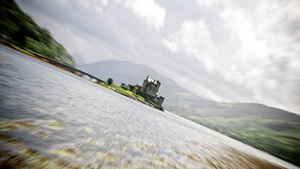Thursday, 18 October 2012
how women are portrayed in horror films?
Women in Horror films are being portrayed as weak, vulnerable and fragile but mainly as hyper-sexual damsels in distress, who are usually killed within the first five minutes as a punishment for their indiscretions in the films such as 'Friday the 13th' and 'Halloween'. They are also portrayed as antagonists, which can be seen as reflecting the men's pathological fear of women and their powers etc.
In slasher films, women are perceived as nothing more than just sex objects. We know this because within films like Friday the 13th and Halloween, they show half clothed, hypers-sexual women. This takes away the audience's ability to sympathize to them because they are seen as less valuable in society. In the classic slasher films, they usually show a direct and effective link between sex and death with murder serving as a symbolic punishment for any immoral intercourse, this suggests and symbolizes a kind of unconscious moral lesson to the viewer.
In Alfred Hitchcock's 'Physco' we see the murder of Janet Leigh's character quite graphically and sexualized. We see her as a sexually independent woman being stabbed with a phallic knife, a symbolic punishment for these women. The sexually repressed male killer fears these types of women and this is shown within her death when the male killers thrusts the knife into her thus taking away her sexual power through the rape of her body.
Thursday, 4 October 2012
shots terminology
What is:
A Medium shot is a camera angle that is
shows full-length view of a human subject is called a medium shot
A long shot is a camera angle that shows
the whole entire body of a person and some of the surroundings.
A extreme long shot is a camera angle
that shows more of the surroundings.
A medium long shot usually shows most of a person, typically head to knees. This gives you the opportunity to show some of the environment.
canted shot/Dutch tilt is a camera angle that it is tilted to the side.
Tilt up is a camera angle that is looking/piveting upwards.
Tilt down is a camera angle is looking/piveting downwards.
Tracking is a camera that is attached to a moving tripod and sits on a track and moves up and down the track following a scene.
Dollying is the same as a tracking shot.
Crane is a camera angle that is filmed from a crane with a camera attached to it.

Aerial/bird's eye view is a shot that is taken from a plane, helicopter or a person on top of a building.


Subscribe to:
Comments (Atom)








